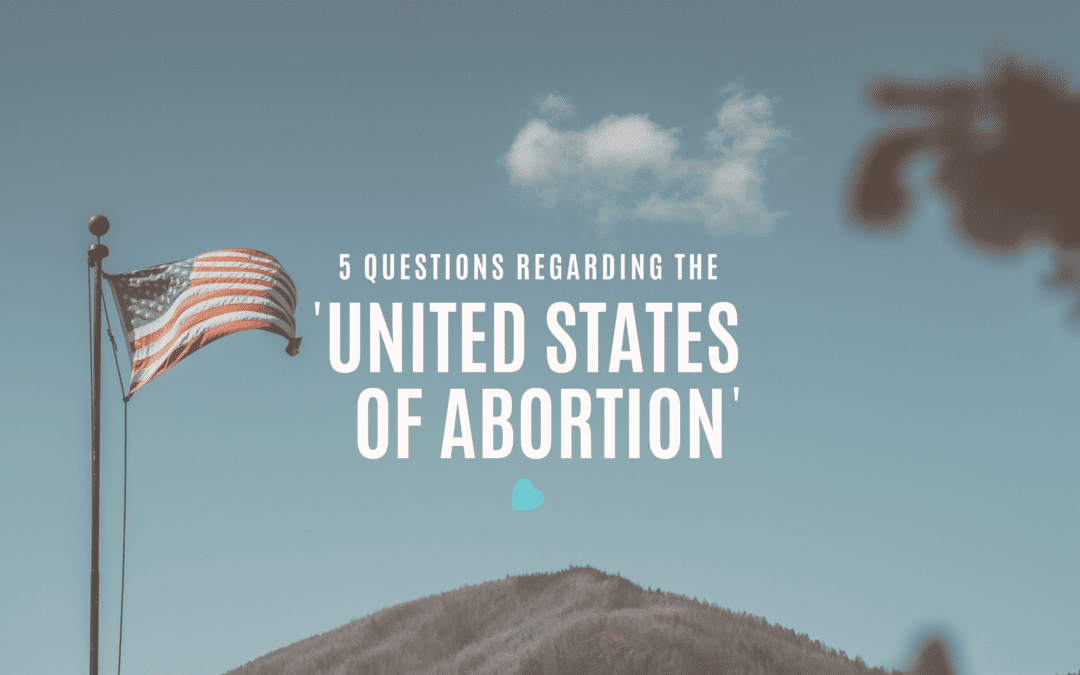In a recent blog post, Marvin Olasky opined how the history of abortion in the United States over the last four centuries was related to how its citizens answered five key questions.
Olasky, a senior fellow of the Discovery Institute, wrote “The United States of Abortion: A Grave History in Five Threads.“ The five questions (which correspond with the letters A-B-C-D and E):
#1 Anatomy: Is the being in the womb human?
#2 Bible: Is Scripture’s teaching on the sacredness of human life binding on us?
#3 Community: What kind of advice and support do vulnerable women receive from boyfriends or husbands, parents or friends, employers, or anyone to whom a woman might look for emotional and financial help?
#4 Danger to women: What is the likelihood of an abortion ending with not just one victim but two?
#5 Enforcement: In what informal and formal ways do those with influence and resources protect the most vulnerable?
In the blog post, Olasky, the former editor-in-chief of WORLD Magazine, shared data from the book he co-wrote earlier this year, The Story of Abortion in America: A Street-Level History, 1652-2022. In the book’s dedication, Olasky honored former Care Net President Guy Condon, who died in a car accident in 2000.
In regards to his last two questions (“Danger to Women” and “Enforcement”) of his blog post, Olasky admits that they are not as relevant in 2023 as they were over the last four hundred years, especially considering that “danger to the mother no longer a deterrent,” and how the prosecution of existing abortion laws is unlikely.
“It’s hard for me to believe that a jury of twelve randomly chosen people in my city would ever imprison an abortionist,” he said.
However, Olasky declared that the first three ABC questions (anatomy, Bible, and community) stand as “bulwarks” for life against death. Care Net, which is at the forefront of a Pro Abundant Life movement, would wholeheartedly agree.
For the “anatomy” question Olasky cites historical markers such as the 1939 World’s Fair in New York City, where more than two million people waited in line to view twenty-four sculptures that showed human development in the womb; a 1965
Ultrasounds certainly play a vital role in today’s pro-life movement. In Care Net’s free eBook, The Truth About Crisis Pregnancy Centers, one of the documents’ key statistics points to the availability of ultrasounds. From 2008 through 2020, Care Net-associated pregnancy centers provided 1.5 million free ultrasounds to women.
Although great strides in technology have made a significant difference in defending life in the womb, Olasky laments the fact that “Americans now have more awareness than ever before of what unborn children look like and less knowledge of what the Bible teaches.”
In his question about the Bible and abortion, Olasky comments on the role of scripture from colonists to Christians in the early twentieth century. He reflects on how pastors spoke out against abortion but notes a shift during the twentieth century and into the twenty-first century.
“Avoiding any mention of abortion was common in churches,” he said.
“Churches can and should be gospel-formed communities that communicate to unhappily pregnant women:
Roland Warren, President and CEO of Care Net, said a holistic, Pro Abundant Life movement can happen when those who are facing unplanned pregnancies are discipled by Christians and local churches.
“Our first thought should be: ‘She needs to be a disciple of Jesus Christ. The child growing inside of her needs to be a disciple of Jesus Christ. The guy that got her pregnant needs to become a disciple of Jesus Christ.’ This work is integrated into who we are as Christians,” Warren said.
“Being Pro Abundant life requires embracing and promoting marriage, encouraging responsible fatherhood, and consistently sharing the transformative message of the Gospel of Jesus Christ.”
Regarding the importance of community (the “C” question), Olasky recalls how, in early America, “community pressure on young men meant that pregnant, unmarried women could generally count on marriage before going into labor,” but that community protection began to break down with the growth of large cities beginning in the 1830s, and left more women and children at risk. In the 1970s, Olasky notes, crisis pregnancy centers tried to create supportive communities.
In the post-Roe United States of 2023, these communities are more vital than ever. At Care Net, our network of over 1,200 pregnancy resource centers are places where women and men considering abortion can find community, compassion, hope, and help.
Will you join our Pro-Abundant Life movement?

